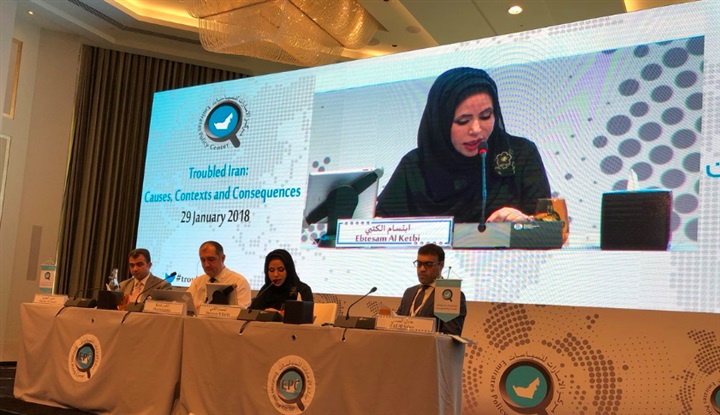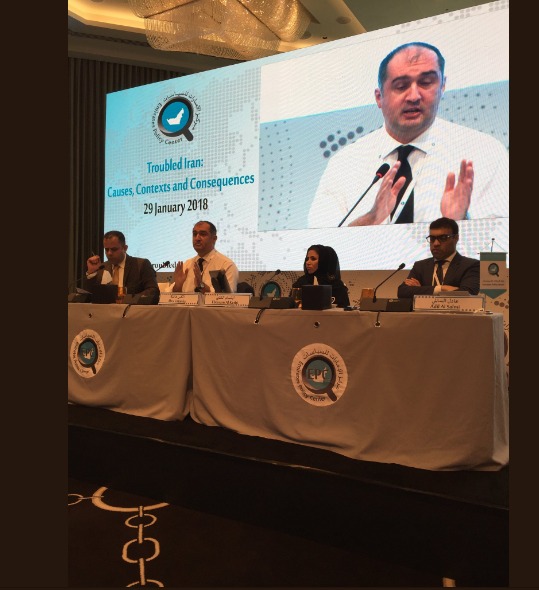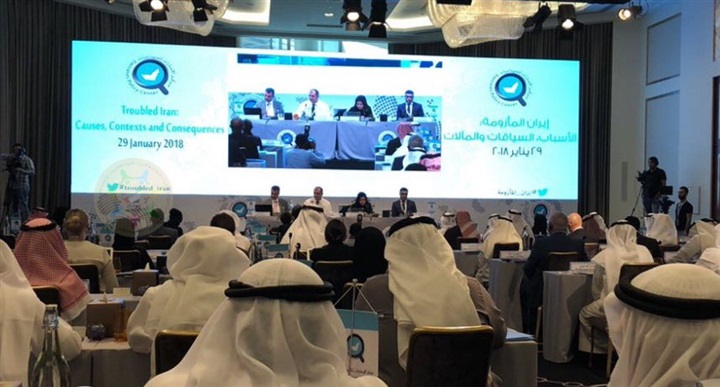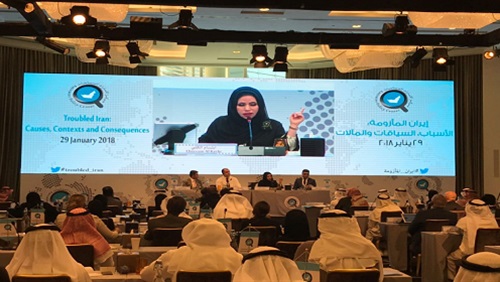Iranian affairs specialists are pondering the future of the Ali Khamenei regime in Iran, especially after the eruption of massive protests across the Islamic Republic.
The protests, they say, point to the presence of problems in the structure of the Iranian regime itself.
They also reveal, they add, opposition among ordinary Iranians to the policies of Iran’s mullahs, ones that led to the impoverishment of the Iranian people, the squander of their wealth and interference in the affairs of neighboring states.

Think tank, Emirates Policy Center, organized on Monday a discussion at its headquarters in Abu Dhabi on latest developments in Iran.
Titled, “Troubled Iran: Causes, Contexts and Consequences”, the discussion opened the door for participation from a large number of specialists in Iranian affairs.
The way the mullahs’ regime in Iran reacted to the latest wave of protests in the Islamic Republic, Center Head, Ebtesam Al-Ketbi, said, only postponed the crisis, not solved it.
She added at the inauguration of the discussion that repression, despotism and inefficient governance cannot continue to rule in Iran forever.
“The sudden eruption of protests and their spread to different areas in Iran show that the stability that appears on the surface in this country does not reflect anger among the Iranian public,” Al-Ketbi said.
The protests also showed, Al-Ketbi added, the failure of the Iranian model which is most manifest in the desire of a large number of Iranian citizens to leave their country for other countries.
She noted that the “closed border policy” followed by the Iranian regime makes it hard for the outside world to reach a deeper understanding of what is going on in the country.
Alex Vatanka, who specializes in Middle Eastern regional security affairs with a particular focus on Iran, considered the protests a reflection of the extent of repression Iranian youths are subjected to.
He said Iranian President, Hassan Rouhani, disappointed those who pinned hopes on him to lead the reform in his country.
Vatanka expected the protests to re-erupt and morph into a revolution against the Guardianship of the Islamic Jurist system in Iran.
Iranian affairs specialist, Sultan Mohamed Al-Nuaimi, said the “death to the dictator” slogan was new and basically chanted during the protests by young demonstrators.
Eighty percent of the residents of Baluchestan province, he added, live under the poverty line.

“The latest wave of protests goes beyond Iran’s economic conditions,” Al-Nuaimi said. “They express Iranian’s rejection of their style of life as a whole.”
He found similarities between the repression faced by the Iranians at present and the repression they faced during the rule of Shah Mohamed Reza Pahlavi (1941 – 1979).
Mohamed Al-Zaghloul, a researcher at the Iran Unit at the Emirates Policy Center, said, meanwhile, that Iran is full of struggles and conflicts.
The Iranian regime, he said, is made up of a number of networks, including this of Supreme Guide, Ali Khamenei.
“There is a sociological disconnect between the majority of the Iranians and the few people who rule their country,” Al-Zaghloul said.
Some people, he added, believe the Iranian regime had already expired which makes it necessary for Iran to move from the revolution to the state.
To these people I say, Al-Zaghloul added, there is no logical basis for this belief.









































admin in: How the Muslim Brotherhood betrayed Saudi Arabia?
Great article with insight ...
https://www.viagrapascherfr.com/achat-sildenafil-pfizer-tarif/ in: Cross-region cooperation between anti-terrorism agencies needed
Hello there, just became aware of your blog through Google, and found ...